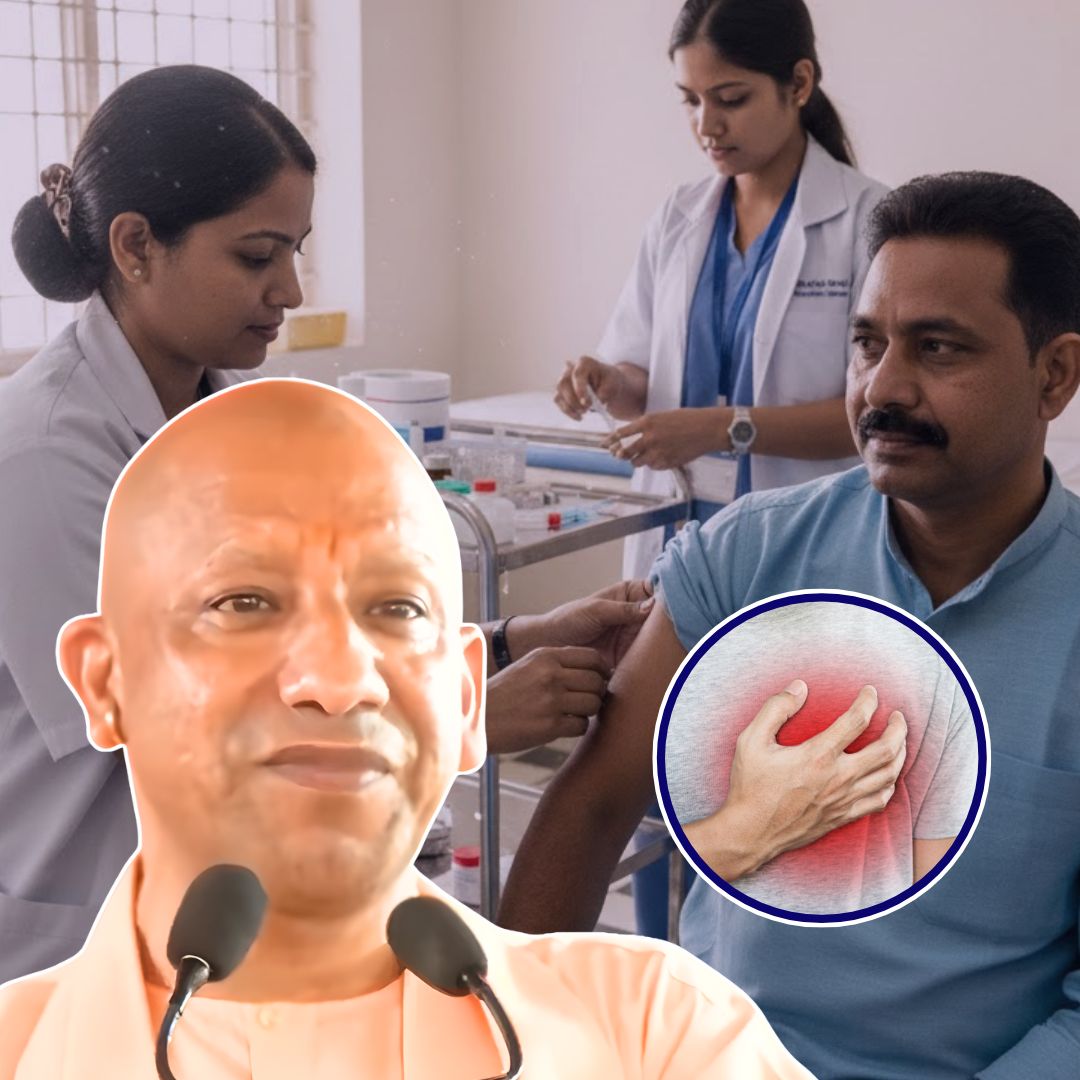In a landmark healthcare initiative, the Uttar Pradesh government, led by Chief Minister Yogi Adityanath, has announced that the life-saving heart attack injections Tenecteplase and Streptokinase, each costing up to Rs 40,000 in the market, will now be provided free of cost at all district hospitals as well as state-run medical colleges and major community health centres (CHCs).
This decision aims to ensure timely treatment for heart attack patients across the state, particularly in rural and semi-urban areas, where access to emergency care has traditionally been limited. Initial rollouts are underway in key districts including Lucknow, Varanasi, Prayagraj, and Kanpur, with plans to extend coverage state-wide within the coming weeks.
State health officials have mandated comprehensive stock management, staff training, and rigorous monitoring to ensure effective implementation. This move is expected to drastically reduce heart attack fatalities in the state, benefiting thousands of patients annually while reinforcing government commitment to equitable healthcare access.
Ensuring Timely Help in the Golden Hour
The government’s policy targets the “golden hour” immediately following a heart attack, the critical timeframe during which timely intervention can save lives and limit heart muscle damage.
The high-cost injections Tenecteplase and Streptokinase dissolve blood clots obstructing coronary arteries, restoring blood flow and preventing fatal heart tissue damage. Dr. Ratanpal Singh Suman, Director-General of the UP Health Department, emphasised, “Providing these injections free at district hospitals is a game-changer for emergency cardiac care in Uttar Pradesh, particularly for patients far from specialised cardiology centres.”
Deputy Chief Minister Brajesh Pathak echoed this sentiment, stating, “A treatment priced nearly Rs 40,000 is now accessible at zero cost, removing a major barrier for many families.” To support this, emergency room staff across district hospitals and CHCs are undergoing focused training in administration protocols, and Chief Medical Officers are tasked with maintaining drug stocks and reporting on availability.
The initiative is designed to enable immediate treatment on admission, significantly improving survival chances before patients can be moved to advanced cardiac units.
Background and Pilot Successes
This ambitious expansion follows promising results from earlier pilot projects conducted in select medical colleges and district hospitals. These pilots demonstrated a marked improvement in “door-to-needle” times, a crucial metric that measures how quickly patients receive lifesaving medication upon reaching the hospital. Encouraged by these outcomes, the UP government decided to scale the program to all district and major community health hospitals statewide.
Uttar Pradesh faces a growing burden of cardiovascular diseases, with approximately 1.5 lakh heart attack cases annually, many of which occur in rural areas with poor emergency infrastructure. Prior to this initiative, cost and availability limited access to rapid clot-busting drugs beyond urban centres and private hospitals.
The state’s health department has adopted a “hub-and-spoke” model for referral and drug distribution to enhance efficiency, alongside planned public awareness campaigns to educate citizens on recognising early symptoms and seeking urgent care.
The Logical Indian’s Perspective
The Logical Indian commends the Uttar Pradesh government for prioritising equitable access to critical, time-sensitive healthcare interventions. This initiative highlights how targeted government policies can reduce health disparities by addressing financial and geographic barriers simultaneously.
However, the success of this program will depend heavily on robust supply chain management, transparent accountability mechanisms, and continuous training for medical personnel. Additionally, raising public awareness about heart attack symptoms and the availability of free treatments will be vital to encourage early hospital visits.













